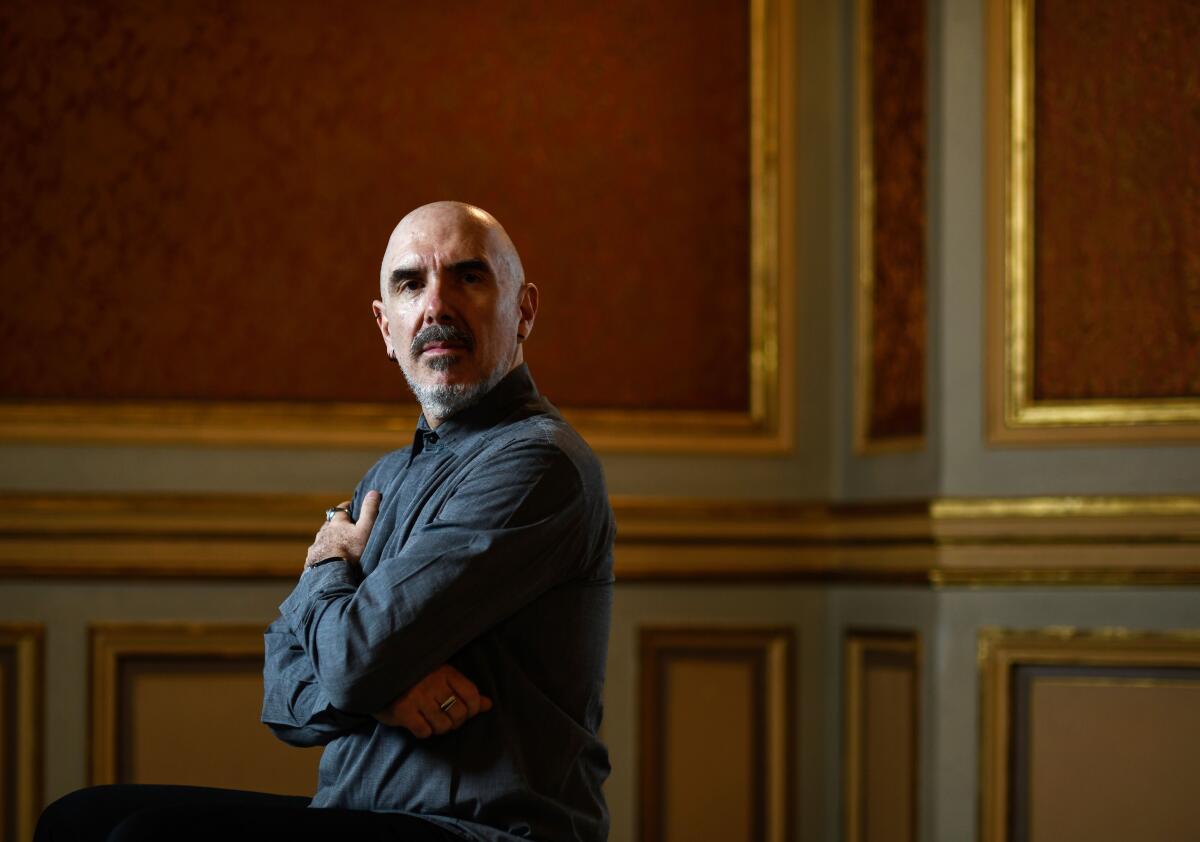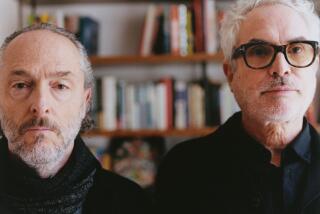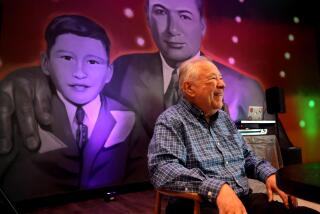Blood, sex and ‘80s art: Director Hari Sama on making ‘This Is Not Berlin’

It is 1986 in Mexico City. A year after an 8.0 magnitude earthquake has reduced parts of the city to rubble. The longtime ruling party, the Partido Revolucionario Institucional, still clings to power. In the decade before Mexico would open itself to the world, it is a moment of stifling isolation.
In the midst of this, a disaffected 17-year-old named Carlos is discovering new worlds in an underground art and music scene where suffocating societal mores do not apply.
This is the world of director Hari Sama’s new feature film, “This Is Not Berlin,” premiering Friday in Los Angeles. The story is loosely inspired by the director’s youth, when he found solace from family troubles in New Wave music and the dance floor of a queer dance club that was also as a popular site for art and performance. Here, among the friends he considered family, he experimented with music, drugs and sexuality.
“For a couple of years I was trying to be gay without being gay,” he says via a Skype call from Mexico City. “My coming out of the closet was like, ‘Oh, I’m straight.’”
Sama’s stand-in in the movie is Carlos (played by the alluring Xabiani Ponce de León), who with his best friend, Gera (José Antonio Toledano), stumbles into an underground party that will forever change his life. Playing Carlos’s troubled mother is the Oscar-nominated Marina de Tavira, who appeared in Alfonso Cuarón’s “Roma.”
Mexico City’s underground art and culture scene also has a starring role. “This Is Not Berlin” is rife with visceral performance — think nudity, blood, sledgehammers (not necessarily in that order). And it gives a nod to an obscure art space that served as an important proving ground.
In this interview, Sama recalls the art and events that shaped him and his film. Of the era, he says: “It felt like freedom.”
What was it about Mexico City in ’80s that you wanted to examine?
The thing with Mexico is that it was a dictatorship, but it was expressed so differently from anywhere else in Latin America. This was not a military dictatorship. From the outside, the country looked open. But the repression was huge.
Rock concerts were forbidden. Gatherings of young people were forbidden. You had ’68 [the military massacre of protesters at Tlatelolco] and then you had ’71 [the Corpus Christi massacre, in which a government-trained paramilitary group killed student protesters] — which you see in “Roma.”
Set in 1986 Mexico City, Hari Sama’s coming-of-age drama pulses with life and energy.
There was nothing from outside. It was hard to get a record. If you wanted to listen to bands like Joy Division or Siouxsie and the Banshees, you had to go to the underground markets in downtown Mexico City or you had to trade them.
But my life got completely changed in that time. Everything was so forbidden that it made it feel special. There was this real underground, this creative explosion. You used yourself as a creative instrument. I wanted to make a film about those groups of people, those artists.
The film refers to Francis Alÿs, a Belgian conceptualist who moved to Mexico City during the ’80s and is connected with the city’s art scene. What other artists inspired the film?
I changed some stuff to make it more cinematic — I personalized it — but it was based on things I saw. There was a Catalonian group called la Fura dels Baus that was a very radical group doing terror theater in Catalonia. They would put people in a factory and then they’d close the doors and do this unbelievable [stuff]. It was incredibly violent. They came to Mexico City in the ‘80s and were very influential. I tried to reproduce a version of a performance they did in the film where they are breaking cars; there were people throwing blood. That was something I really saw.
That was all in a house that belonged to the Quiñones brothers — la Quiñonera — and it became really important to everything. It was these brothers who inherited this house when they were only 19; their father moved to Cuernavaca. And they started renting the house for parties and rock bands.
They started curating these exhibits in the garden and these very young artists were doing things: Gabriel Orozco and Damián Ortega, before anyone knew them. Teresa Margolles also came out of there.
Gabriel Orozco did this thing where he moved the bougainvillea from one side of the house to the other side of the house. He was experimenting. You could see the seeds of what came later. I managed to shoot there for the film.
What about the nightclub you feature in the film, the Aztec. What is that based on?
The Aztec was inspired by le Neuf in the Zona Rosa, the gay area, and a little bit by a club called the Tutti Frutti, where they played music. At le Neuf, the owner — he was a French guy — loved art and he opened it to performance and gay culture. It was very theatrical. You’d be seeing all of these pansexual people in these outfits. It didn’t matter if you were male or female, everyone had their eyes painted. It would go on until 8 in the morning.
But I also drew from a meaningful trip I made to New York City with my brother. New York City was wonderful in the ‘80s, and one of the little clubs we went to was called the Aztec Lounge. All the walls were painted in colors that came out with blacklight — these skulls. You would listen to the Smiths and the Cure and to underground stuff. It was wonderful.
How did you end up at le Neuf to begin with?
At some point I met a family that was a very important family to me. They had a composer father from Scandinavia who was a crazy intellectual. And they had a gay friend who had been to the Neuf. So we went and they let us in. And we were like, what is this? We were like hippies. We had long hair and some of us didn’t have shoes. I was out of time, out of place. But when I found these people, I became a New Wave, post-punk guy with the black nail polish. I was all glam.
This club opened the doors to all of the outcasts in the city. So it was very important. I don’t think it housed more than 200 people. It was very small. I came to know all of these people there — my best friend from the time, he was a painter and he died in 1990 or ’91. I have one of his paintings in the film.
What was it like to revisit this period of your life?
It’s been crazy. We started shooting in the suburbs, with what would have been my house, and I started feeling very moved. It was very intense. And now the film is out there and it is thing that is me and it is being judged. But all of these serious contemporary artists taught me that it was good to be vulnerable in my work. It’s very powerful to do that — it’s people using frailty in such a strong way. And it’s empowering to honor that and let it go.
Looking back, the size of this — it was very small. In Madrid, there were like 20 clubs. We had le Neuf. It was a very tiny seed. But even if it was a tiny thing, it was still a seed.
'This is Not Berlin'
More to Read
The biggest entertainment stories
Get our big stories about Hollywood, film, television, music, arts, culture and more right in your inbox as soon as they publish.
You may occasionally receive promotional content from the Los Angeles Times.











